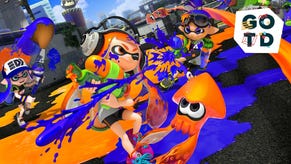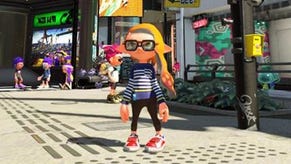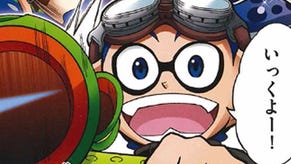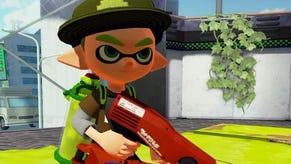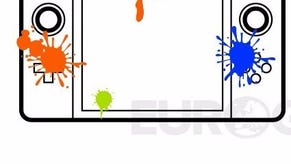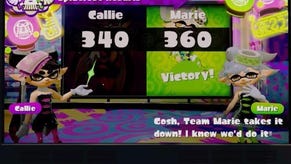Splatoon review
Duluxe.
Is Splatoon a shooter or isn't it? There's been a lot of discussion about where exactly Nintendo's new Wii U exclusive - the first all-new character-led IP to emerge from within the company for 14 long years - fits, but in truth it defies easy categorisation. Yes there are guns, though they're employed in a different kind of wet-work: one that sees splashes of vivid, bright colour sloshed all over the stages. There's competitive online play at its heart as well, though success isn't measured in how many headshots you pop off but in how much colour you bring to the world, and how successful you are in spreading that thick, sloppy ink. This is new territory for the company, for sure, but the one thing that's evident throughout Splatoon is that, despite the lack of familiar faces, it's every inch a Nintendo game.
It's a machine for happiness, in other words, where each element has been engineered to elicit a smile. Nintendo's games have always held fun at a premium, of course, but given a blank piece of paper it's fascinating to see how far its developers go in energetically providing colour of their own. Splatoon is a giddy, at times delirious game.
It's chaotic, too. The Turf War battles that are the default online mode see two teams of four face off against each other from opposite sides of the map, working to paint as much of the floor as possible in their own ink. At the end of each match, the amount of territory is totted up, and a winner is declared. It's scrappy and it's simple, and it speaks to a pleasure as primal as that found in other online shooters, even if it's more overtly juvenile: this isn't about bloodlust, and it's only nominally about a sense of conquest. Predominantly, Splatoon is all about creating a big, gaudy mess.
The chaos is orchestrated by exquisite design, as you might well expect from Nintendo EAD. Form meets function in the characters you control: slightly gangly teenagers whose purposeful posture speaks of their energy, and who can transform into squid at the press of a button, gliding through the ink they deposit with impressive speed. It's a strange concept that's been approached with a sense of impeccable, meticulous logic, each system tying into one another in a delicious weave.
Take the ink you spray, which drips gloriously from each surface (glimmering like gloss, it almost burns the nostrils with its freshly laid, acrid paint shine). Dipping into it in squid form allows you to hide from enemies, to move faster, to scale painted walls and to top up your ink reserves - and so victory comes about not just by spraying everywhere, but by spraying wisely, opening up new channels for yourself and your team-mates.
Take the weapons, variants on shooter staples that are bent towards Splatoon's own particular style. There are the rollers that steam their way through levels, creating a pathway so others can follow in their wake, or the squat 52. Gal that spits out thick angry globules of paint. There are the special abilities that unleash huge towering geysers that can tear through enemies, or give you an Inkzooka that thuds out whole pools of spray. Nintendo's quite the gunsmith, it turns out, even if its armoury is pointedly non-lethal.
Take that adolescent veneer too, which works its way outwards from your genetically spliced teen protagonists. The Shibuya-esque hub world in which you're deposited every time you start up Splatoon is a fulcrum of fashion, where shops that refresh their stock every day sell you hats, shoes and shirts that each come with their own perks and abilities (a game of dress-up that's reminiscent, in its own way, of Square Enix's excellent The World Ends With You). There's a sense of bubblegum rebellion in the day-glo punk aesthetic too, backed up by spiky, catchy tunes that cascade with all the sweetness of late-90s Sega.
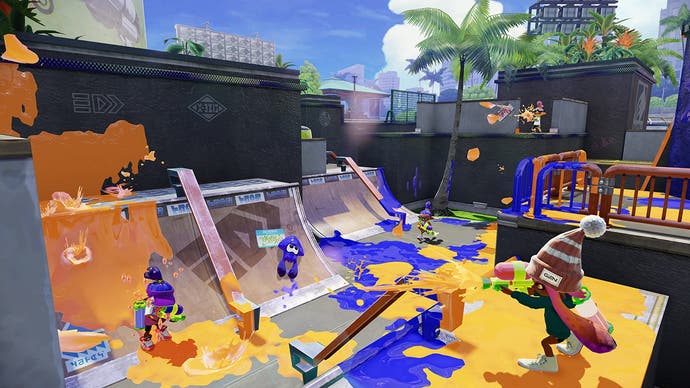
It's enough to make you think you're playing the best Dreamcast game that never was, though this is one of those rare titles that works hard to fill out the Wii U's eccentric brief. The GamePad's put to good use - even if the optional motion controls are somewhat divisive - with the touchscreen an integral part of your own loadout. Reading the map that's hosted on the second screen, identifying where your ink is needed and what areas need winning back, is essential to victory, as too is using the touchscreen to mark out and leap to your team-mates' side.
In that leap, told with a brief squat of your squid before they fling themselves across the map, you'll find all that's great about Splatoon: a solution to a common multiplayer problem, solved with a unique sense of style. It's the kind of craft you find cropping up throughout Splatoon, from the drama of the results screen provided by a plump flag-bearing cat to the Miiverse messages that find themselves daubed over the walls of stages like so much cute graffiti. They're the kind of details that can bubble up and surprise you even after a week's intense play - like how the frustration at the lack of an ammo counter on the HUD gives way to delight when you eventually find it in the canister on your character's back, slowly depleting with each schlepping shot.
There's a more traditional Nintendo game to be found in Splatoon in the four-hour diversion provided by its single-player mode. More than a mere tutorial for multiplayer, it's a fully featured campaign with its own progression system, its own hub world and its own novel ideas that, as is so often the case in EAD's work, are ushered in for single levels before disappearing, never to be seen again. It plays out like a short, sweet semi-sequel to Super Mario Sunshine, its platforming powered by colourful gushes of ink, and all those ideas come together in a climactic boss fight that's the equal of anything created by Mario's Tokyo EAD team.

Beyond that, there are still signs of Nintendo finding its feet in a multiplayer-centric game - or, charitably, staking out its own eccentric territory. Splatoon launched as a comparatively light package - reflected in its slightly slimmer asking price - with just one mode and five maps available on day one. It's a curious model that makes for a game that can initially feel lightweight, even if it's already expanding at a fairly rapid rate. A new map has been introduced within days of release (dubbed Port Mackerel, it's currently one of Splatoon's trickiest locales, a maze of containers patrolled by moving trucks that can be mounted for an aerial advantage), as well as Ranked Battles and Splat Zones, a variant on King of the Hill. Updates from this point on are set to be weekly, climaxing in August with the introduction of custom battles and squads.
Voice chat remains off the cards - an omission that's understandable given Nintendo's desire to provide a safe space to play, but still one that feels like it's holding back a deeper, more tactical brand of play. It all speaks to Splatoon's own unique rhythm: the daily refresh of stock in the plaza's shops and the drawn-out trickle of generous updates suggests the longer tail of other online games, while the rate of progression and the three-minute fights suggest something pithier, punchier and more poppy.
It's those three minutes that really count, though, and it's there you'll find the genius and the joy of Splatoon. It's where you'll find a genre distilled, broken down and reassembled, with each piece snapping perfectly in place. It's where you'll find Nintendo charting new territory, and sharing with you the thrills of their own discovery. And it's where you'll find what happens when Mario's maker steps away from the comfort of the Mushroom Kingdom and tries something new: a true modern classic, and one of Nintendo's finest games in a generation.




